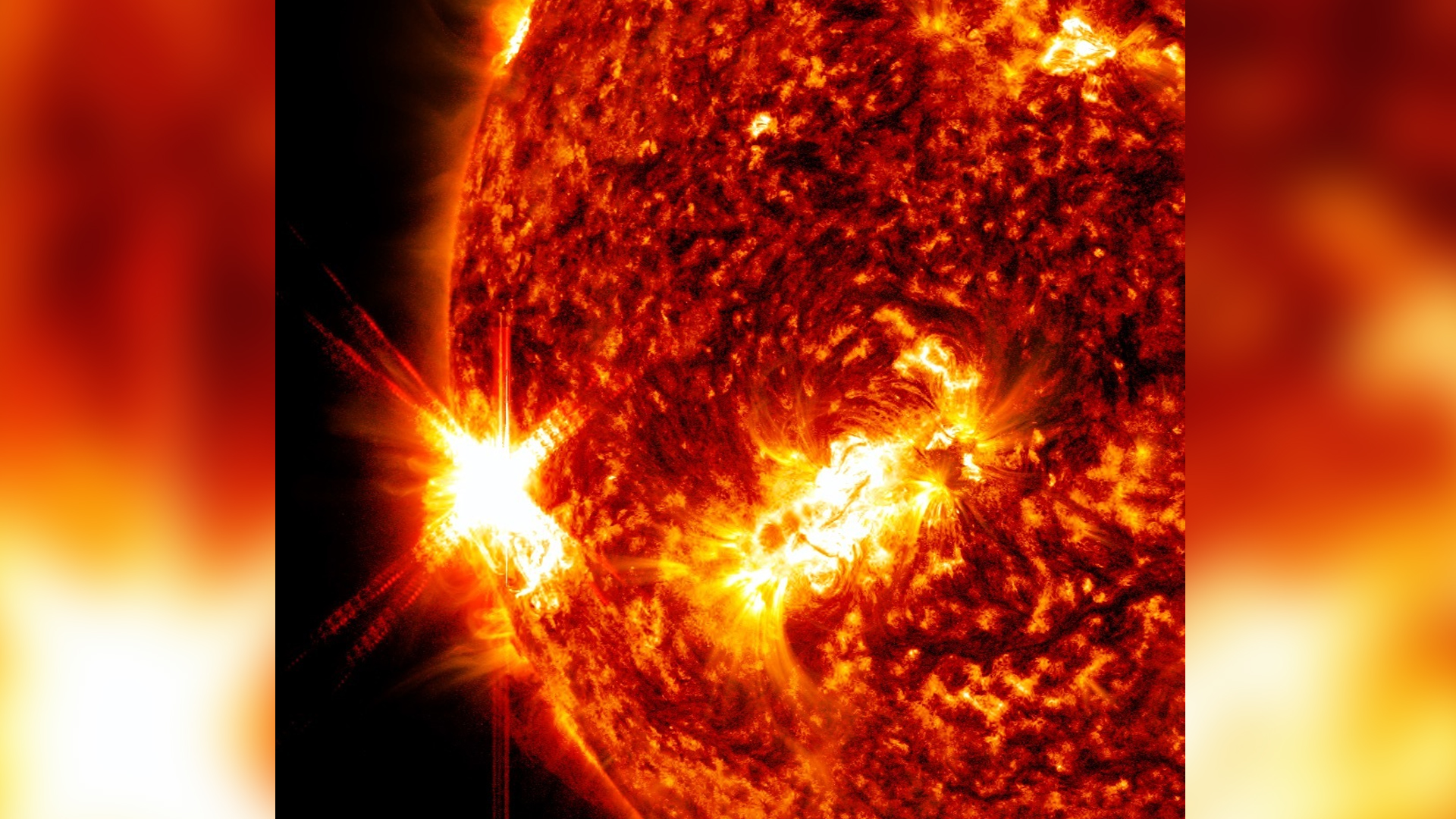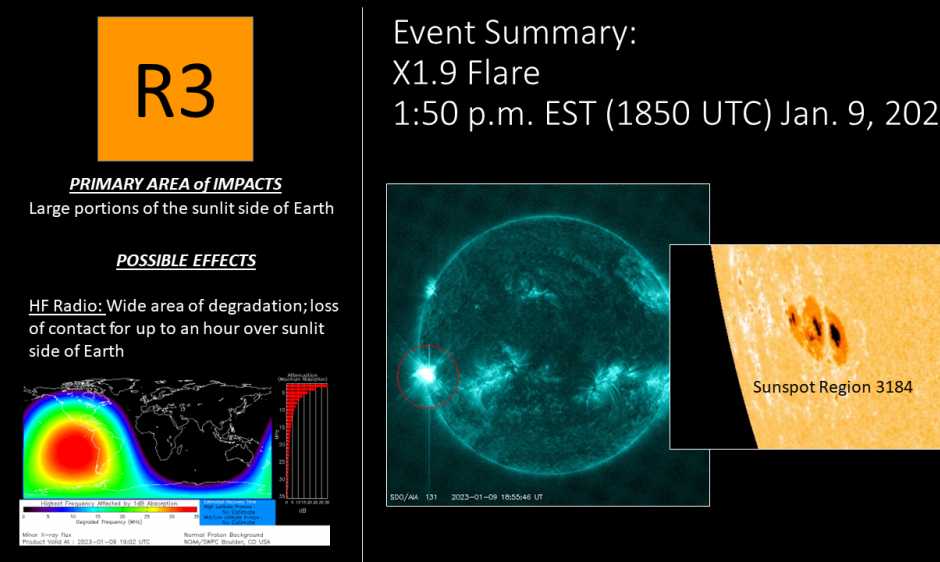Huge solar flare erupts on the sun from 'hyperactive' sunspot
The massive X1.9-class solar storm is the second huge flare in 4 days from the sunspot AR3184.
A massive explosion on the sun unleashed a powerful solar flare from a new sunspot on Monday (Jan. 9), one that is slowly turning to face the Earth.
The solar flare erupted at 1:50 p.m. EST (1850 GMT) as a X1.9-class sun storm that caused a temporary, but strong, radio blackout across parts of South America, Central America and the Pacific Ocean, according to a statement from the U.S. Space Weather Prediction Center at the National Oceanic and Atmospheric Administration. X-class flares are the strongest types of storms from the sun. Monday's flare came from the same sunspot that fired off an X1.2-class solar flare on Jan. 5, NOAA reported.
"The source is hyperactive sunspot AR3184," astronomer Tony Phillips of the space weather website SpaceWeather.com wrote in an update. "None of the debris plumes will hit Earth; the sunspot is not facing our planet. It will turn in our direction later this week."
Related: The sun's wrath: Here's the worst solar storms in history

NASA captured stunning images and video of the solar flare with its Solar Dynamics Observatory, a space-based telescope that continually watches the sun in different wavelengths.
Solar flares are intense eruptions from the surface of the sun that explode at a variety of power levels. The weakest flares, classified as A-, B- or C-type storms, are typically minor. The stronger M-class flares can fling charged particles at Earth that supercharge our planet's auroras, amplifying displays of northern lights and southern lights.
Related: Extreme solar storms can strike out of the blue. Are we prepared?
Get the Space.com Newsletter
Breaking space news, the latest updates on rocket launches, skywatching events and more!

When aimed directly at Earth, X-class solar flares "can impact radio communications, electric power grids, navigation signals, and pose risks to spacecraft and astronauts," NASA said in a statement.
The sun is currently in an active phase of its 11-year weather solar cycle. The current phase is known as Solar Cycle 25, which is expected to peak in 2025.
NASA tracks solar flares and other space weather events by watching the sun with a variety of spacecraft. In addition to the Solar Dynamics Observatory, the Solar and Heliospheric Observatory or SOHO (a joint mission by NASA and the European Space Agency) also regularly watches for space weather events.
Email Tariq Malik at tmalik@space.com or follow him @tariqjmalik. Follow us @Spacedotcom, Facebook and Instagram.
Join our Space Forums to keep talking space on the latest missions, night sky and more! And if you have a news tip, correction or comment, let us know at: community@space.com.

Tariq is the Editor-in-Chief of Space.com and joined the team in 2001, first as an intern and staff writer, and later as an editor. He covers human spaceflight, exploration and space science, as well as skywatching and entertainment. He became Space.com's Managing Editor in 2009 and Editor-in-Chief in 2019. Before joining Space.com, Tariq was a staff reporter for The Los Angeles Times covering education and city beats in La Habra, Fullerton and Huntington Beach. In October 2022, Tariq received the Harry Kolcum Award for excellence in space reporting from the National Space Club Florida Committee. He is also an Eagle Scout (yes, he has the Space Exploration merit badge) and went to Space Camp four times as a kid and a fifth time as an adult. He has journalism degrees from the University of Southern California and New York University. You can find Tariq at Space.com and as the co-host to the This Week In Space podcast with space historian Rod Pyle on the TWiT network. To see his latest project, you can follow Tariq on Twitter @tariqjmalik.








